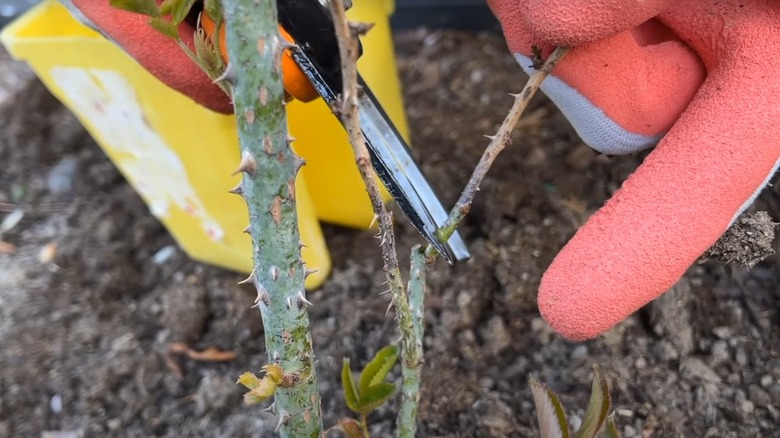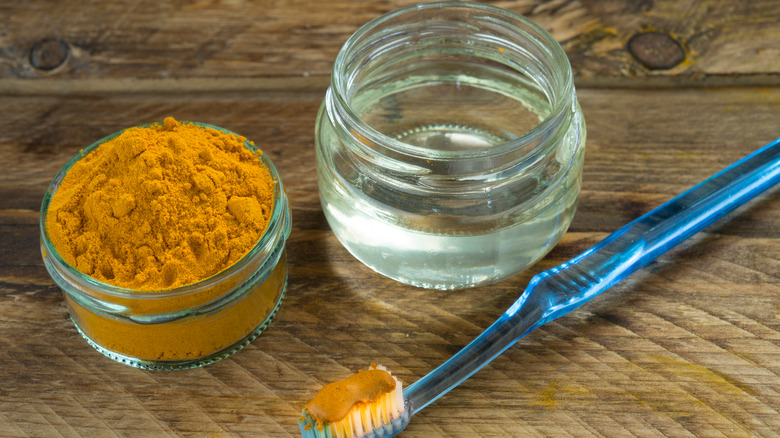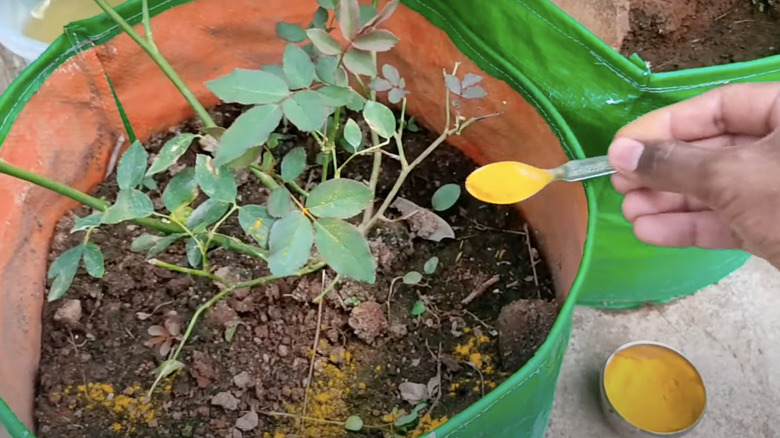The Secret To Treating Rose Dieback Disease Is In Your Spice Cabinet
Growing roses in your garden provides abundant color, beauty, and fragrance. They're often the most gifted flower on every memorable holiday. Roses can be challenging to grow if they're not cared for properly. They are incredibly delicate, so when diseases attack them, they have difficulty fighting them off. If you started growing roses in your yard but have noticed their branches or stems turning brown, they are infected with rose dieback disease. A few causes for rose dieback are improper pruning or frost damage. However, turmeric from your spice cabinet is the best way to help your roses heal.
Turmeric has many immune-boosting nutrients that help heal various plants that suffer from diseases. Plus, it prevents fungus and bacteria from entering the wounds and causing more damage to the plant. Since roses are prone to dieback easily, applying turmeric on their browning stems and branches will help speed the recovery and promote healthy growth. When you don't treat the dieback disease, it could spread toward the graft and eventually the roots, killing the plant. A little turmeric paste will go a long way in your plant's healing journey.
How to make turmeric paste to treat rose dieback
When you notice your roses turning brown, act quickly by using turmeric. You want to prevent the disease from spreading. Waiting too long will cause more damage. Using turmeric will help jumpstart the healing. You'll need turmeric, water, and a bowl.
Depending on how many of your rose stems and branches are wounded will determine how much turmeric paste you'll need. Measure one part turmeric and two parts water in your bowl and mix to get a thick paste. Add more turmeric if you feel that your paste is too watery. Then, coat your rose's wounds with the paste. Apply a thick layer to the plant to cover every inch. You can leave the plant as is or wrap a thin cloth around the turmeric to create a protective barrier.
Monitor your plant for a few days to track its healing process; it will take some time before you notice a difference. If the turmeric washes off from sprinklers going off or when you're watering the plant, apply more paste to continue the healing journey. You'll know the paste works when the roses start growing new branches and the browning has faded. Once your roses are healed, it's essential to maintain their health by adequately pruning them when needed with sanitized shears after every cut. Always prune the branches and stems at a 45-degree angle to prevent water from sitting on the cut and damaging them.
Other turmeric benefits for your roses
While turmeric has exponential healing powers, it boasts multiple benefits that will maintain your rose's health. For example, turmeric isn't at the top of the list of things pests enjoy eating, especially when pests love hiding in the soil. Mixing turmeric with your rose's potting soil will repel pests and keep the roots healthy. Add one tablespoon per gallon of potting soil. Avoid using too much turmeric because it has high levels of acidity, which could damage the roots.
If your roses are fully grown and starting to attract pests, make a turmeric spray repellent with water to spray on your roses. Add one tablespoon of turmeric to a gallon of water and spray your roses once a week. Spray the bushes lightly to prevent giving the roses too much acidity.
Powdery mildew is a prevalent fungal disease that enjoys making an appearance on rose bushes; using the turmeric spray will help heal the affected plant. Simply mix 2 teaspoons of turmeric with 100 milliliters of milk and 2 teaspoons of distilled white vinegar in a liter of water and apply it to the rose's foliage. Apply the solution every two weeks to treat the foliage. It's the best natural remedy to help your roses thrive without adding any chemical solutions.


